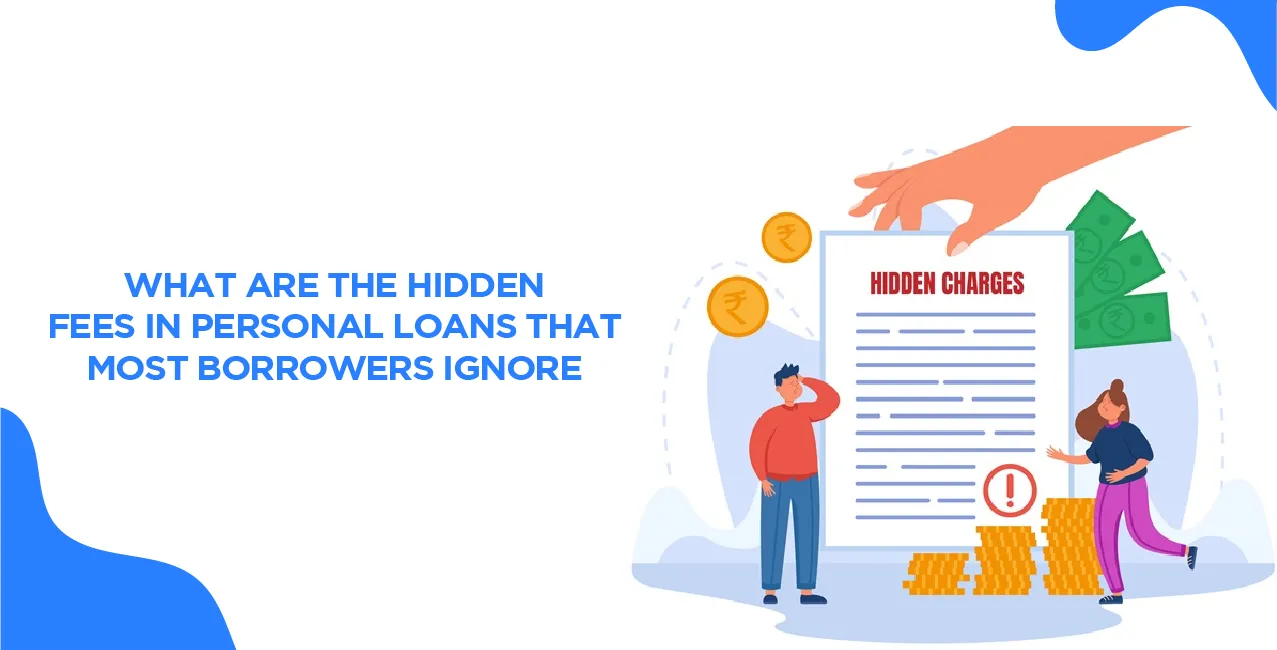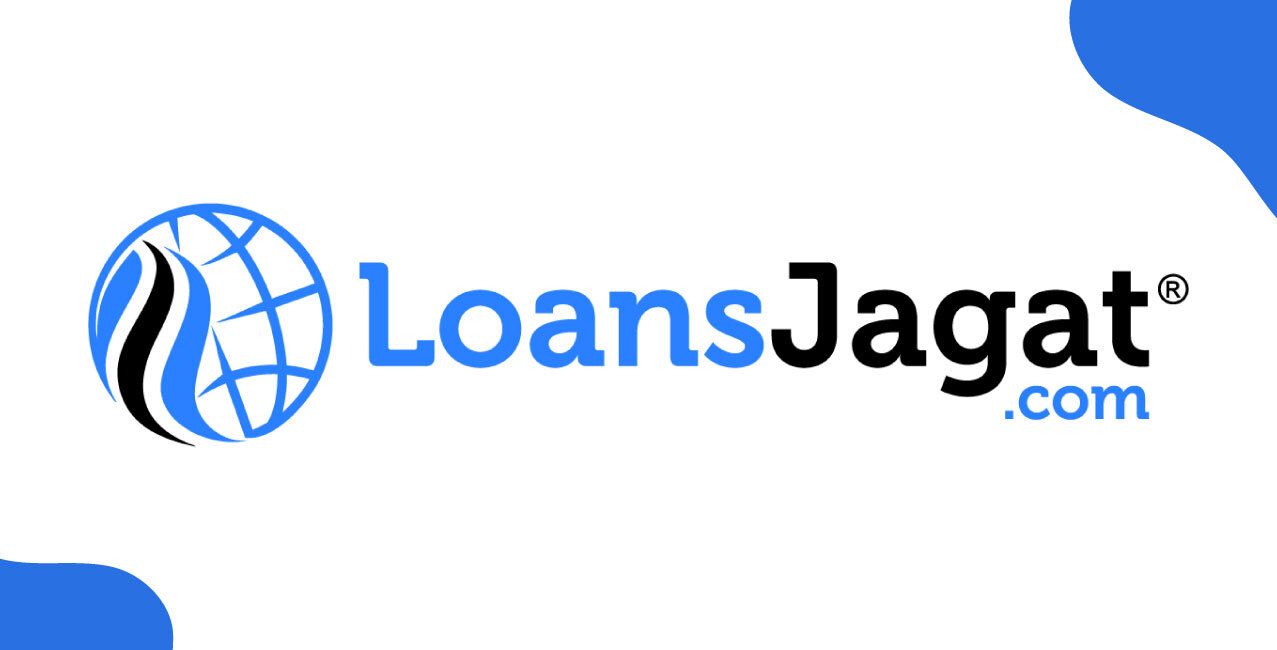
Author
LoansJagat Team
Read Time
9 Min
16 Jun 2025
What Are The Hidden Fees In Personal Loans That Most Borrowers Ignore?
When choosing a personal loan, many borrowers emphasise only the interest rates and monthly payments. At this stage, very few of them seem to be aware of further fees that very well might considerably finance the loading cost of taking credit. The charges can include origination fees, late payment penalties, and others, up to pre-payment penalties. All of these can leave a borrower in shock, as they can hurt the borrower's budget.
Let's say Ashok takes out a personal loan of ₹10,00,000 with a 10% interest rate for a 3-year tenure. He is excited to see that his monthly payment is approximately ₹32,300, assuming no extra costs. Soon, he discovered the hidden fees that made his loan far more expensive than he had initially expected.
Gaining knowledge about these hidden fees will do a great deal toward helping Ashok make an informed decision and select the loan that suits his budget and repayment ability.
WHAT ARE HIDDEN FEES IN PERSONAL LOANS?
Let’s look into the various hidden fees that increased Ashok’s loan cost:
ORIGINATION FEE
Lenders charge an origination fee for processing the loan. These can range from 1% to 8% of the loan amount and are either deducted from the loan disbursement or added to the repayment cost.
Read More – 7 Hidden Clauses in Personal Loans
In Ashok’s case, the lender charged him 2%.
₹10,00,000 x 2% = ₹20,000
This means he will only receive ₹9,80,000 and not the full ₹10,00,000.
LATE PAYMENT FEES
These are the penalties on personal loans and are usually calculated as a percentage of the overdue EMI amount.
If Ashok missed an EMI, he might be charged a flat late fee of ₹1,000 or a percentage (e.g., 2%) of the EMI amount.
If his lender charges 2% on the EMI: ₹32,300 x 2% = ₹646 per missed payment.
If he misses 3 payments during the loan tenure, then he would pay ₹646 x 3 = ₹1,938.
PREPAYMENT PENALTY
If individuals decide to pay off their loan early, the lender may charge them a prepayment penalty. This fee compensates lenders for their lost interest savings.
Suppose Ashok decides to pay off his loan before the tenure ends; then he might be charged 2% to 5% of the
outstanding principal.
For example, after 1.5 years, if his remaining principal is ₹5,50,000, and the penalty is 3%, he will pay: ₹5,50,000 x 3% = ₹16,500.
PROCESSING FEES FOR PAYMENTS
Some lenders charge a fee for making payments through debit cards, credit cards, or third-party apps. Choosing automated bank transfers can sometimes help individuals avoid this fee.
If Ashok makes manual payments instead of automated deductions, he could be charged ₹250/transaction. Over 36 months, this could add up to ₹250 x 36 = ₹9,000.
LOAN INSURANCE CHARGES
Some lenders automatically include loan insurance to protect against borrower default due to death/job loss.
In Ashok’s case, the insurance cost could be between 0.5% and 2.5% of the loan amount.
If he is charged 1.5%, then he might have to pay ₹10,00,000 x 1.5% = ₹15,000.
CHEQUE BOUNCE/INSUFFICIENT FUND FEES
If Ashok’s bank account does not have sufficient funds to cover his EMI, the lender will charge a penalty, typically between ₹500 and ₹1,500 per failed attempt.
Suppose he faces three failed payments during the tenure; his total cost could be:
₹1,000 x 3 = ₹3,000
LOAN STATEMENT CHARGES
Most lenders provide free annual loan statements. If Ashok needs an additional statement for tax/financial
planning, he may be charged ₹200 to ₹500 per request.
For example, if he requests three extra statements over the loan tenure, he could pay:
₹300 x 3 = ₹900
LOAN RESCHEDULING FEES
If Ashok wants to extend his loan tenure or wants to change his EMI due date, lenders may charge a loan modification fee ranging from ₹2,000 to ₹10,000.
Suppose the rescheduling fee is ₹5,000; this would increase his overall cost.
FORECLOSURE STATEMENT FEES
If Ashok plans to close his loan early, he may first need a foreclosure statement, which some lenders charge a fee for.
His lender charges ₹1,000 for the statement; this adds to his expenses.
CONVERSION FEES
Some lenders allow borrowers to switch from a floating interest rate to a fixed rate or vice versa. However, this comes with a conversion fee, usually a percentage of the outstanding loan amount.
If Ashok wants to switch rates and his outstanding balance is ₹6,00,000, and the lender charges 0.5%, then he will pay ₹6,00,000 x 0.5% = ₹3,000.
DUPLICATE NOC (NON-OBJECTION CERTIFICATE) FEE
After Ashok fully repays his loan, the lender issues an NOC, confirming that he has no outstanding dues. If he loses this document, getting a duplicate copy may cost ₹500/request.
Let’s have a look at the total additional costs that Ashok might have to pay:
FEE TYPE | ESTIMATED AMOUNT |
Origination Fee (2%) | ₹20,000 |
Late Payment Fees | ₹1,938 |
Prepayment Penalty | ₹16,500 |
Payment Processing Fees | ₹9,000 |
Loan Insurance Charges (1.5%) | ₹15,000 |
Cheque Bounce Fees (₹1,000 x 3) | ₹3,000 |
Loan Statement Charges (₹300 x 3) | ₹900 |
Loan Rescheduling Fee | ₹5,000 |
Foreclosure Statement Fee | ₹1,000 |
Interest Rate Conversion Fee (0.5%) | ₹3,000 |
Duplicate NOC Fee | ₹500 |
Total Hidden Costs | ₹75,838 |
HOW TO AVOID HIDDEN FEES IN PERSONAL LOANS
Personal loans can incur hidden fees that can exponentially increase borrowing costs. Let us understand these hidden fees by analysing a few examples so that you can be wary of them.
READ THE LOAN AGREEMENT CAREFULLY
Also Read - Top 5 Loan Scams
Before signing any loan document, go through the terms and conditions thoroughly. Look for any mention of fees, such as:
- Origination Fees (charged for processing of the loan)
- Prepayment Penalties (charged for paying off the loan early)
- Late Payment Fees (charged for missing a due date)
- Annual Maintenance Fees (charged yearly for keeping the loan active)
ASK THE LENDER ABOUT ADDITIONAL FEES
Lenders may not always disclose all fees upfront. You have to ask specific questions, such as:
- Are there any processing or service charges?
- Will I be penalized for paying off the loan early?
- Are there late fees, and how much are they?
COMPARE LENDERS AND LOAN OFFERS
Different lenders have different fee structures. Differentiate between multiple lenders and check
- Interest Rates (fixed vs. variable)
- Total Loan Costs, including fees
- Customer Reviews and Lender Reputation
For example, if Lender A were to offer a 10% interest rate with no early payment penalty and Lender B a 9.5% interest rate but with a 3% early repayment penalty, you might choose Lender A if you anticipate an early repayment.
CHECK FOR NO-FEE LOAN OPTIONS
Some lenders may offer unsecured loans without origination. Make sure to check for these options to save some money.
UNDERSTAND APR
The APR encompasses both the interest rate and fees. The lower the APR, the fewer hidden charges, making it easier to just match up the loan offers.
For example, Loan A is 10%, and it charges a fee of ₹5,000. Loan B has an interest rate of 10.5% with no fees at all. Depending upon the tenure, Loan B may suit you the best.
SHUN PAYDAY LOANS AND PREDATORY LENDING
Payday loans and other high-fee interest loans can lock you into a downward cycle of debt repayment.
For example:
LOAN TYPE | LOAN AMOUNT | PROCESSING FEE (5%) | AMOUNT RECEIVED |
Payday Loan | ₹50,000 | ₹50,000 x 5% = ₹2,500 | ₹47,500 |
STAY ON TIME WITH PAYMENTS
Delays can mean additional charges or penalties and will hurt your credit potential. Set up auto-payments or reminders to remind you when payments are due.
THE ROLE OF CREDIT SCORE IN FEE DETERMINATION
Your credit score plays an important role in the fees and interest rates that you will be charged for your personal loan. A person with a higher credit score may borrow money with lower fees, while a person with an inferior credit score might face certain other charges.
Let’s see how credit scores affect fees:
CREDIT SCORE RANGE | IMPACT ON FEES AND RATES |
750 & ABOVE | Lower interest rates, reduced or waived fees, and better loan terms. |
650 - 749 | Moderate interest rates, possible origination and processing fees. |
550 - 649 | Higher interest rates, increased chances of late payment penalties, and strict approval conditions. |
BELOW 550 | Very high interest rates, a high risk of loan rejection, and excessive fees. |
CONCLUSION: THE TRUE COST OF PERSONAL LOANS
While personal loans are a valuable financial instrument, you must know the true cost of borrowing, including those hidden fees. Origination charges, prepayment penalties, late payment charges, and other miscellaneous fees can add considerably to the cost of your loan. By reading the loan agreement carefully and querying the lender regarding any charges, you can make a better decision and be spared an unpleasant surprise.
FAQs
1. How do I know about hidden fees before signing a loan contract?
Request your lender to provide you with a breakdown of the fees and carefully read the terms of the loan before signing.
2. Do all personal loans have hidden fees?
Not all, but most loans have fees. Always shop around to get the most transparent lenders.
3. Can I negotiate hidden fees with my lender?
Yes, certain fees, such as origination and prepayment penalties, can be negotiated based on the lender.
4. Do online lenders charge fewer hidden fees than banks?
Online lenders tend to have lower overhead expenses, resulting in fewer fees, but always review the terms.
5. What do I do if I am charged unexpected fees?
Call your lender to get the charges explained. If the fees were not disclosed, you might be able to contest them.
6. What is the typical origination fee for a personal loan?
Origination fees range from 1% to 8% of the loan, varying with the lender and borrower's credit history.
7. Do there exist personal loans with no hidden fees?
Yes, there exist lenders that provide loans with transparent pricing, but it's essential to read the fine print and shop around.
8. Can hidden fees increase the cost of a low-interest loan?
Definitely. A loan with a low-stated interest rate but hefty fees may prove to be more expensive than a higher-interest loan with fewer fees.
9. How do I approximate the total cost of a personal loan?
Use an online loan calculator, entering all fees, interest rates, and terms of repayment to approximate accurately.
10. Are late fees avoidable if I miss a payment?
Some lenders have hardship programs or offer grace periods, but it's better to speak with your lender before missing a payment.
11. Do all lenders have prepayment penalties?
No, not all lenders charge prepayment penalties. Always check before you sign the contract.
12. Can I refinance a loan to prevent hidden charges?
Yes, refinancing can get you a better rate with lower fees, but be sure the new loan does not bring more hidden expenses.
13. Are credit unions different from banks in terms of hidden fees?
Credit unions tend to have lower charges than conventional banks, so they are a great option for borrowers.
14. Can processing fees be refunded if my loan is rejected?
Processing fees are rarely refunded by lenders, so ask them first before applying.
15. How will my credit score influence the fee I pay?
A good credit score can enable you to get lower-fee and more favourable term loans.
About the Author

LoansJagat Team
‘Simplify Finance for Everyone.’ This is the common goal of our team, as we try to explain any topic with relatable examples. From personal to business finance, managing EMIs to becoming debt-free, we do extensive research on each and every parameter, so you don’t have to. Scroll up and have a look at what 15+ years of experience in the BFSI sector looks like.

Quick Apply Loan
Subscribe Now
Related Blog Post


